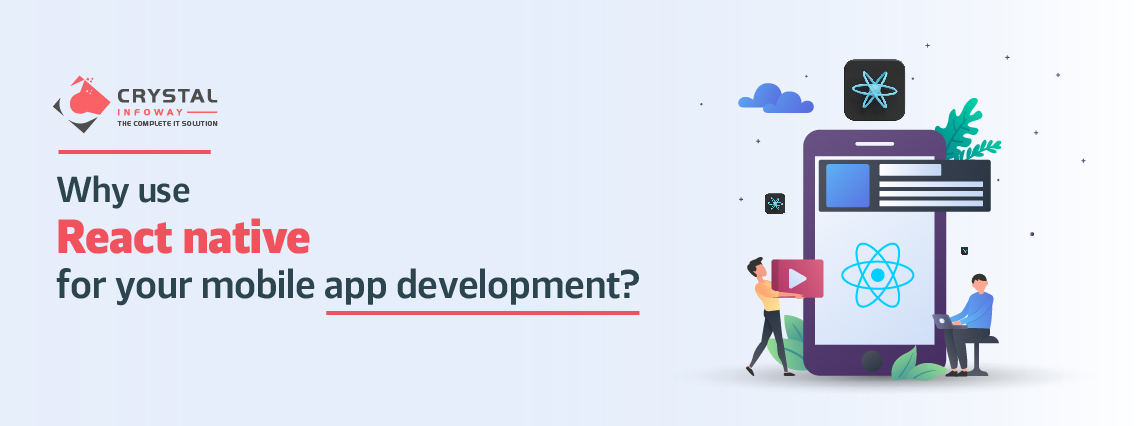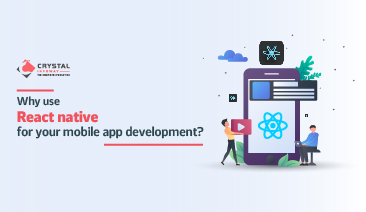
Request a Call Back
Enter your contact details and one of our friendly team member will be in touch soon!.

Enter your contact details and one of our friendly team member will be in touch soon!.

React Native is a popular open-source framework created by Facebook for building high-performing and feature-rich mobile applications. It allows developers to build native apps using the same React library used for web development, resulting in an efficient codebase that can run on both iOS and Android platforms. React Native offers several advantages over traditional app development methods including cross-platform compatibility, faster performance, cost savings, modern UI design, device-responsive UIs, and robust community support. By leveraging the power of React Native, developers can create powerful user experiences while reducing time to market significantly.
Cross-platform compatibility is one of the biggest advantages offered by React Native. With one codebase, developers can create apps that are compatible with both iOS and Android platforms. This means that instead of having to develop separate native apps for each platform, a single code base can be used to deploy an app on multiple platforms simultaneously. This saves time and money as it eliminates the need for duplicate development efforts. Furthermore, flexibility in app deployment is also available with React Native allowing developers to continuously update their applications without needing to recompile or redeploy different versions for each platform. Developers can easily test out new features quickly on multiple devices at once using hot reloading capabilities within the framework itself. Finally, since React Native uses a JavaScript-based syntax, it makes coding easier for web developers who want to build mobile applications without learning a completely new language
React Native is renowned for its performance and reliability. It has been optimized to ensure faster loading times, improved user experience, and enhanced scalability. Additionally, it integrates with native code to provide access to a wide range of device features such as camera, GPS, microphone, etc. This allows developers to create powerful apps which are not just cross-platform compatible but also leverage the full capabilities of a mobile device. React Native’s ability to integrate with existing native code makes it easy for teams who have already built products using other languages or frameworks like Objective C or Java. By leveraging these existing codes and combining them with React Native libraries, developers can quickly build powerful apps that take advantage of all device features without having to write additional lines of code from scratch.
The integration between React Native and native code also ensures better security when compared to other hybrid application development methods which use web view components in their architecture. With this added layer of protection against malicious actors, businesses can be assured that their applications remain safe even if some parts are written in Java Script instead of traditional languages like Objective C or Java. As a result, businesses get an app that offers both rich functionalities as well as robust security standards at the same time – something that is rarely achievable through conventional methods
React Native provides a modern user interface that is both easy to use and highly responsive. It allows developers to create beautiful designs while also optimizing them for different screen sizes and resolutions. This ensures that users get the best possible experience regardless of the device they are using. Additionally, React Native utilizes its design system which helps developers quickly build powerful UIs with minimal effort. The pre-built components provided by this system can be easily customized and tweaked as needed to suit any specific project requirements.
Moreover, React Native’s intuitive gesture support makes it easier for users to interact with an app naturally. As gestures have become increasingly popular on mobile devices, React Native has incorporated various features such as swiping, scrolling, pinching, etc., into its framework allowing developers to create apps that use these gestures without having to write custom code from scratch every time they need one implemented. Furthermore, animations created using React Native look smooth and fluid making them more engaging than their native counterparts while still providing the same level of performance across all platforms.
Finally, device responsiveness is another key feature of React Native’s UI design capabilities which enables applications built using this framework to adapt automatically depending on the particular device being used by a user or customer at any given moment in time. For example, an app could detect if a user is accessing it from an iPhone or Android phone and adjust itself accordingly so that no matter what platform someone is accessing it from everything looks great without needing any additional coding work done each time something changes
React Native’s community support is one of its greatest strengths. With a growing number of developers and contributors, React Native has been able to maintain an active user base that can help answer questions, share tips, and best practices as well as provide technical assistance if needed. For instance, the official React Native docs are constantly updated with new content which provides detailed information on how to use certain features or implement certain design patterns to maximize performance. Additionally, there are also numerous online forums where developers can get feedback from experienced users to troubleshoot any issues they may be having or find solutions for complex problems.
Another advantage offered by React Native’s robust community support is the availability of third-party solution providers who specialize in providing additional services such as custom development, testing, and deployment solutions tailored specifically for this framework. This allows businesses to outsource their entire mobile app project without needing to worry about finding the right talent internally since these vendors already have experience working with React Native applications. Furthermore, many of these solution providers also offer cost-effective packages which make it easier for businesses on tight budgets to develop powerful apps without breaking the bank.
In conclusion, React Native offers tremendous advantages over traditional methods when it comes to developing high-performing and feature-rich mobile applications quickly and cost-effectively. By leveraging its cross-platform compatibility capabilities along with its modern UI design system and robust community support network, developers can create powerful user experiences while minimizing time spent on development tasks significantly compared to other frameworks available today.
Cost savings are an important factor to consider when developing mobile applications. React Native allows developers to save time and money by utilizing its re-usable code structure which can be deployed on multiple platforms without needing separate development efforts for each platform. This means that instead of having to write different codes for each platform, a single codebase can be used across all devices. Furthermore, the flexibility offered by React Native also ensures faster time-to-market since it eliminates the need for recompiling or redeploying after making any changes – something which is especially beneficial in today’s fast-paced digital world where businesses require solutions quickly to stay competitive.
React Native also offers other cost-saving benefits such as reduced development costs due to its open-source nature and access to vast libraries of reusable components built by experienced developers from around the world. Additionally, with hot reloading capabilities within the framework itself, teams can test out new features quickly on multiple devices simultaneously without needing additional resources or manpower allocated toward testing tasks. Finally, since React Native uses a JavaScript-based syntax there is no need for web developers who want to build mobile applications to learn completely new languages like Objective C or Java – making coding simpler while still allowing them access to all device features available in native apps like camera, GPS, etc. All these advantages combined make React Native one of the most cost-effective app development frameworks available today
In conclusion, React Native is an incredibly powerful and versatile framework for developing mobile applications that offer a myriad of benefits to developers. The ability to write code once and deploy it on multiple platforms dramatically reduces development time while also saving businesses money as they no longer need to hire additional resources or allocate extra manpower towards testing tasks.
Additionally, with its open-source nature and access to vast libraries of reusable components built by experienced developers from around the world, teams can quickly build high-performing apps without having to spend countless hours writing custom codes from scratch. Finally, the intuitive gesture support provided by React Native makes it easier for users to interact with an app naturally while still offering them robust security standards thanks to its integration between native code and JavaScript components.


Introduction React Native is a popular ...
Read More

Are you looking for top Website developmen...
Read More